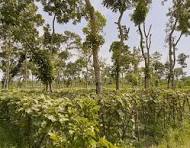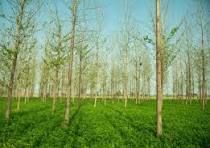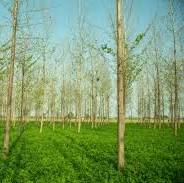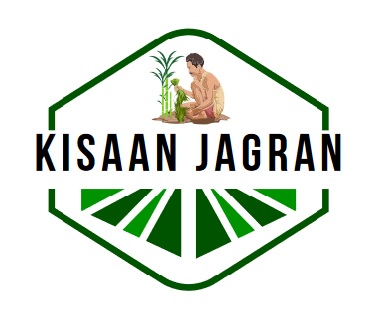
Agroforestry: Special on World Environment Day, 5 June. Publish Date : 04/06/2025
Agroforestry: Special on World Environment Day, 5 June.
Practicing agroforestry in Meerut: a way toward fighting both with climate change and Boosting farmer’s income.
Dr. Nidhi Singh
Climate change is no longer a distant threat—it's here, reshaping our weather patterns, drying up soils, and threatening food security across the globe. But hidden in the roots of ancient wisdom lies a modern solution that is agroforestry.
What is Agroforestry?
At its core, agroforestry is the practice of integrating trees and shrubs into farmland and agricultural landscapes. It's not a new idea. Indigenous communities around the world have practiced it for centuries. But as climate change intensifies, agroforestry is gaining renewed attention as a nature-based solution with the power to cool the planet, restore biodiversity, and sustain rural livelihoods.
Trees: The Unsung Climate Heroes
Trees absorb carbon dioxide—a major greenhouse gas—from the atmosphere and store it in their trunks, roots, and leaves. By planting trees on farms, agroforestry turns agricultural land into a carbon sink, helping to pull carbon out of the atmosphere and fight global warming. Farmers can enhance their income by integrating some economical value trees in their cropping system. Trees are profitable assets with multiple advantages and benefits associated.
Agroforestry Initiatives in Meerut

Western Uttar Pradesh (UP) it is primarily characterized by two main agro-climatic zones: the Bhabhar and Tarai Zone and the Western Plain Zone. The Meerut region incomes under Western Plain Zone of Uttar Pradesh, India and falls under subtropical agro-climatic zone with alluvial soils, hot summers, and moderate winters. Agriculture sector in UP is diverse with major crops grown are sugarcane, rice and wheat etc. This region is suitable for a range of agroforestry trees that can provide both economic returns and climate resilience.The Uttar Pradesh government, in collaboration with The Energy and Resources Institute (TERI), has launched six agroforestry-based carbon finance projects across 29 districts, including Meerut. These projects aim to link farming with the global carbon credit market, potentially generating 4.5 million carbon credits valued at approximately ₹230 crore .
Some profitable and climate-resilient trees that can be grown in the Meerut regionand will help in enhancing both farmers income and fighting with climate change are suggested here-
Poplar (Populus deltoides)

- Purpose: Timber, plywood, paper industry
- Income: High – harvested in 6–8 years
- Intercropping: Wheat, sugarcane, mustard, vegetables
- Needs good irrigation
Moringa (Drumstick Tree)
- Purpose: Leaves, pods, seeds for food and medicine
- Income: Annual returns; high-value in markets
- Intercropping: Compatible with vegetables and legumes
- Requires minimal care, drought-tolerant
Neem (Azadirachta indica)
- Purpose: Medicinal, bio-pesticide, timber
- Income: Medium-term; steady demand in pharma and agro
- Intercropping: Suitable in early stages
- Extremely drought- and pest-resistant
Ber (Ziziphus mauritiana)
- Purpose: Fruit; good for dry areas
- Income: Yields from 3rd year; fruits sold fresh or processed
- in poor soils; requires minimal water
Bamboo (Dendrocalamusstrictus or Bambusa spp.)
- Purpose: Construction, handicrafts, paper
- Income: High value; harvested in 3–4 years
- Fast-growing; suitable for boundary plantations
Guava (Psidium guajava)
- Purpose: Fruit
- Income: Early bearing (2–3 years); high market demand
- Ideal for intercropping with vegetables and legumes
Agroforestry Modelswhich can be followed in Meerut region are suggested here-
- Poplar + Wheat/Sugarcane
- Guava + Turmeric/Ginger
- Aonla + Legumes
- Moringa + Vegetables

Writers: Professor R. S. Sengar and Dr. Nidhi Singh, Division of Plant Biotechnology and Director Training and Placement, Sardar Vallabhbhai Patel University of Agriculture and Technology, Modipuram, Meerut.


